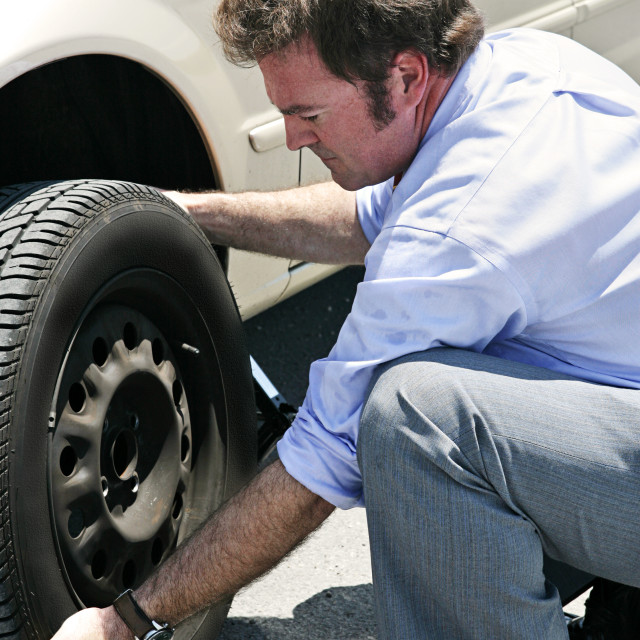Last Updated October 7, 2022
TireHungry.com is reader-supported. When you buy through links on our site, we may earn an affiliate commission at no added cost to you
The main reason why vehicles hit a curb is because of unseen objects or terrains on the road or even the weather. This usually happens at night, a strong rain, or during wintertime. From potholes, ice shards, and curbs, hitting a curb is certainly such a drag. It makes it even more stressful when you don’t have enough guidelines on what to do when running into one.
Hitting a curb can certainly ruin your tire. As much as it’s hard to see objects and debris on the side of the road, it’s also tough to determine what’s ahead especially when running at a high speed.
What's In This Guide?
Listing down all the possible scenarios on a curb hit will give you a more collected and analytical approach on the matter. It’s best to see all things and consider every possible details that may have happened during the hit.
It is important to know the possible results from curb hits. Aside from the rim and the suspension, tires can also tear up because of the traction and the uneven distribution of weight. It can also cause trouble from receiving cuts and collisions with sharp objects.
Treads May Incur Punctures Due To The CollisionThe tread itself could get damaged if it receives the majority of the force depending on the degree of the hit. This would result in a possible slow leak and damaged cords. Even worse is that this scenario can cause a flat tire. It is true, however, that treads are more protected compared to the sidewalls, but it may fail to completely protect the whole tire from a strong hit.
Even objects that aren’t that sharp could still penetrate the tread if the trajectory of the object is direct to the tread and if the speed is too high.
The Tire Bead and Tire Belt May Not Be Able To Withstand The Force Of The CollisionAs we all know, beads are responsible for keeping the tire intact with the rim itself. If the bead is moved due to the hit, the tire may fail to hold the air pressure inside and could cause the tire to flatten out or even blow out.
If the bead is moved due to the hit, the tire may fail to hold the air pressure inside and could cause the tire to flatten out or even blow out.
The same thing goes with the tire belt. If the curb hit is strong enough to inflict damage on the belt, the vehicle may experience a stronger bounce and may cause the tires to flatten or blow out completely.
The Valve May Get Busted Due to The HitThe tire valve could easily break if the hit happened sideways and there were objects that collide with the rim. This will instantly cause your tire to flatten out quickly. Ideally, you would hear a strong whistle sound if ever the valve is damaged.
Even when it did not happen sideways, a strong curb hit could bend the wheel and affect the valve right away. You will instantly feel the depletion of air from the tires once the valve breaks apart.
Damaged Suspension Can Flatten or Blowout The TireA curb hit does not necessarily mean that your suspension is damaged right away, some vehicles experience this and still moves as if nothing happened. It is always according to the degree of the hit that gives the hint of whether your vehicle’s suspension received any damage.
It is always according to the degree of the hit that gives the hint of whether your vehicle’s suspension received any damage.
An unaligned suspension can certainly tear down the durability of the tire. For example, you have noticed that the rims and the tires seem to be fine but you failed to diagnose the condition of the suspension. A vehicle that runs with an unaligned suspension will cause the tire to run unevenly, wear down, and may result in a tire blowout which could be even more dangerous.
You can right away notice the changes by observing the steering wheel upon driving. The steering wheel will go on one side instead of heading towards a straight line. From that, you would be able to determine whether the suspension is busted or there is something wrong with the tire itself.
What to Do In Case Curb Hit Happens?The primary objective when a curb hit happens is to pull over. You need to inspect the car thoroughly and cross out any possible issues a car may have due to the hit. It is also an advantage if you have tools ready whenever this case happens. Staying calm and collected is necessary for you to keenly observe your vehicle.
It is also an advantage if you have tools ready whenever this case happens. Staying calm and collected is necessary for you to keenly observe your vehicle.
The possibility of getting a damaged tire isn’t as high as getting a damaged rim or suspension components. But it is still possible. To monitor whether the tire is in a safe state or not, here are a few steps on how to check the conditions of your vehicle and your tire according to the difficulty and availability of the tools needed.
Step 1: Check Sidewalls and ValveThis is the easiest thing to do whenever a vehicle hits a curb. Checking the sidewalls will verify if the side part of the tire has a cut. This is important because sidewalls have lesser strength to manage tension and pressure compared to the center part of the tire and the treads. Also, it’s easier to check the condition of the tires from the sideways because it does not require any mechanical tool for observing.
Next is the valve. You need to see whether the tire valve got into any collision or if it obtained a slow leak or malfunction due to the hit. Like the sidewalls, it’s easier to check on the valve first before proceeding to the next step because it requires no mechanical tool for checking.
You need to see whether the tire valve got into any collision or if it obtained a slow leak or malfunction due to the hit. Like the sidewalls, it’s easier to check on the valve first before proceeding to the next step because it requires no mechanical tool for checking.
Now we proceed to the more complex side of diagnosing your tire condition. Primarily you want to check whether the center part of the tire got any cuts due to the hit. Try to feel any air coming out of the tire and leave a mark on it to determine where the cut is found. In some cases, if the rim and suspension are not damaged, you can still try and proceed with fixing the tires with sealants.
You also need to check whether there are cords that popped out because of the hit. Cords are responsible for maintaining the tire’s strength and shape. Choosing to drive a vehicle with a defective cord can be inconvenient and dangerous. That is why this is a crucial part of checking because it will determine whether the tire can still be fixed at the moment of the hit.
If all goes well with the rim and the tire, you can proceed to the nearest repair shops. But if you think that the tire is messed up, do not force to drive as it is not safe.
Step 3: Use A Gauge to Check The Pressure of the TireIf available, it’s also good to use a gauge in checking the tire’s pressure. This is important because there are times tire problems occur but cannot be seen right away. By using a gauge, you would be able to know whether there are changes in the tire pressure after the hit. Ideally, you want to have 30-35 psi. If it goes lower than that, it is highly encouraged that you apply sealant, replace the damaged tire, or consult an expert.
Keep in mind that upon checking the gauge, the tire pressure can still change depending on the intensity of the hit. A 33 psi could drop into 28 in a matter of minutes, that is why it is best not to take the risk of driving the vehicle off right away after the collision.
Step 4: Keep Your Tools With YouIt’s better to be ready than to be sorry. By getting all the tools for tire replacement prepared, given the fact that you have established that the rim and the suspension are still capable of running, it’s best that you change your tires and go to the nearest repair shop as possible.
By getting all the tools for tire replacement prepared, given the fact that you have established that the rim and the suspension are still capable of running, it’s best that you change your tires and go to the nearest repair shop as possible.
If you have considered all the issues and it turns out that your vehicle is still safe for running, the only place to go is the mechanic. Do not risk driving ahead for a longer period of time if not necessary. Do not also drive at full speed because the vehicle’s capability to run does not mean that it is safe enough to withstand the speed.
Move Your Vehicle To a Wider SpaceThe purpose of this is you want to thoroughly check all the possible issues your vehicle may have after the curb hit. By moving your car into a safe wide area, you can start checking the engine and transmission of your more vividly.
You can also start checking your other tires if in case that they were also affected by the hit.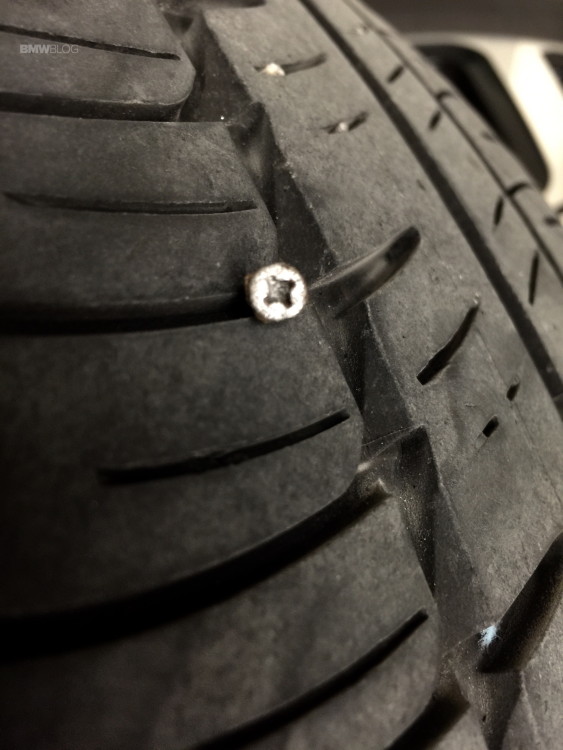 If you have considered all the issues and it turns out that your vehicle is still safe for running, you can try to move your car into a wide space and try to inspect it once more until you’ve reached a repair shop.
If you have considered all the issues and it turns out that your vehicle is still safe for running, you can try to move your car into a wide space and try to inspect it once more until you’ve reached a repair shop.
To ensure that you can still bring your car to a mechanic or a local expert near you, take routes that are less or has no bumpy roads. Take care of the current condition in order to minimize any possible issues ahead. This will prevent your tire from being stressed out and from flattening.
Be Cautious About The Condition Of The Vehicle As it RunsThings may change suddenly when the car starts running. You have to make sure that you observe everything as you drive the vehicle apart from driving slow and steady. A small sound or a small change in the vehicle’s condition should be enough sign to pull over. Make sure to check the steering wheel, suspension, transmission, and tires.
FAQsIs It Safe To Drive Your Car Even When The Tire’s Sidewall is Ruined?The answer is no.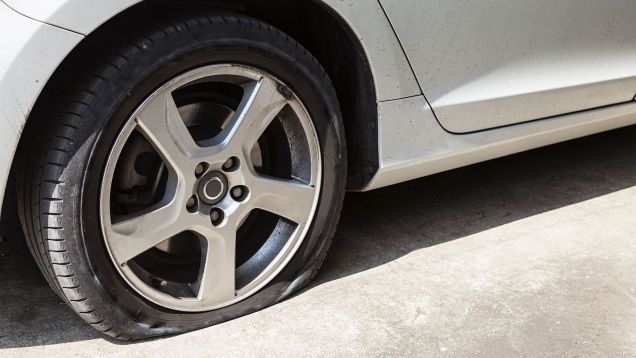 If you have established that the sidewall of the tires is not doing so well, you should not drive the car. Instead, replace the tire or contact a car mechanic near you. Driving your car with a ruined sidewall can cause a lot of trouble as it cannot hold anymore the air pressure inside the tire. As it starts running, heat will also play a role in reducing the grip of your tire and may cause the tire to flatten or blow out.
If you have established that the sidewall of the tires is not doing so well, you should not drive the car. Instead, replace the tire or contact a car mechanic near you. Driving your car with a ruined sidewall can cause a lot of trouble as it cannot hold anymore the air pressure inside the tire. As it starts running, heat will also play a role in reducing the grip of your tire and may cause the tire to flatten or blow out.
If things go well, and you weren’t in a serious collision, tire damage can soon occur over a longer period of time than expected. It is necessary to have your tires checked every week at the very least. You can also bring it to tire experts and mechanics for further diagnosis.
ConclusionIt is our responsibility as drivers to be distinctive enough on which road to take and how fast we should go. Curb hits are indeed an unfortunate and stressful scenario and no one wants to be in the position of having to experience all these things.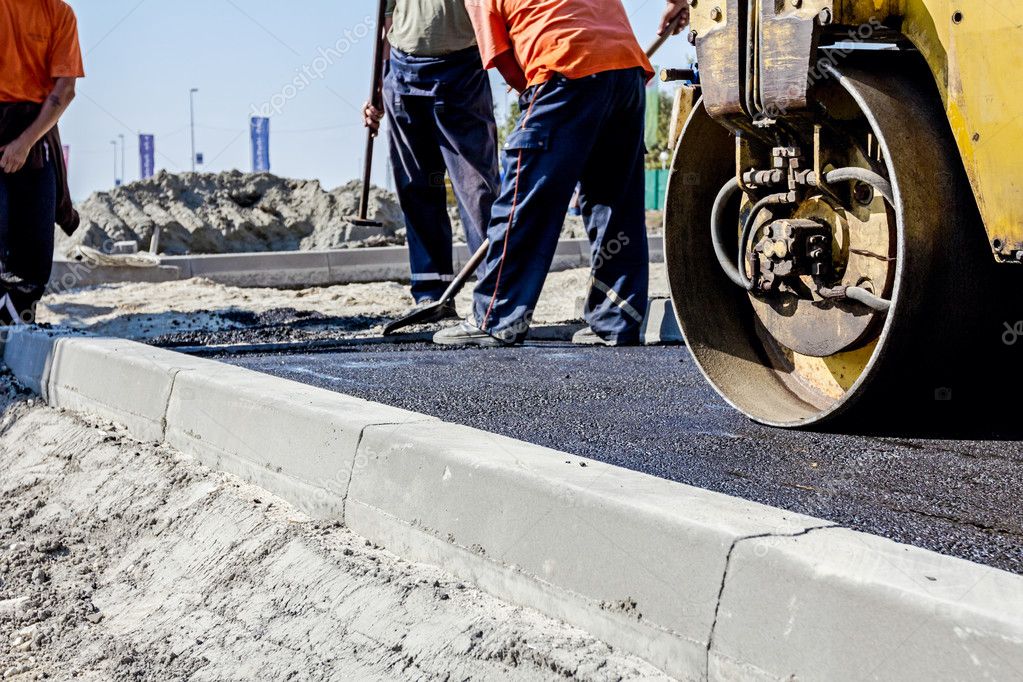
But now, we have the ability to stay informed and be organized with what to do step by step when a hit occurs. Overall, the most important thing that we should all keep in mind is to be safe and keep calm on the road.
After all, curbs, broken roads, and potholes have always been there. For us to be able to avoid them, we have to be informed well enough on more convenient detours and not risk our vehicles passing into rough roads.
Recently Published GuidesTop Tire Retailers
Striking a curb with your vehicle can cause damage to various components that don’t actually come into physical contact with the curb. These components work in synchronicity to allow you to steer your vehicle and provide a more comfortable and safer ride.
When your tire or rim strikes a curb with sudden force, it sends a shock wave through the system and can result in your vehicle becoming unsafe to drive or completely inoperable. Therefore, it’s important to have your vehicle checked by a qualified mechanic after hitting a curb, even if there is no visible damage. Here are a few of the possible repercussions of a curb strike.
Therefore, it’s important to have your vehicle checked by a qualified mechanic after hitting a curb, even if there is no visible damage. Here are a few of the possible repercussions of a curb strike.
Tire or Rim Damage
Tire damage can include an actual laceration of the sidewall of the tire, which is more readily apparent because of the likelihood of the tire going flat immediately after the event. The sidewall of a tire is much thinner than the treads – often only one quarter inch thick.
However, the valve stem, which is used to inflate the tire and protrudes from the side, may also become damaged. This leads to a slow and persistent leak and an unexpected flat tire the morning after the strike.
A bent wheel rim can also cause a tire to leak, either immediately or slowly, because it can no longer provide the proper seal. Bent rims can often be repaired. However, depending upon the severity of the damage, they may need to be replaced.
Wheel Misalignment
This is a common hazard associated with a curb strike.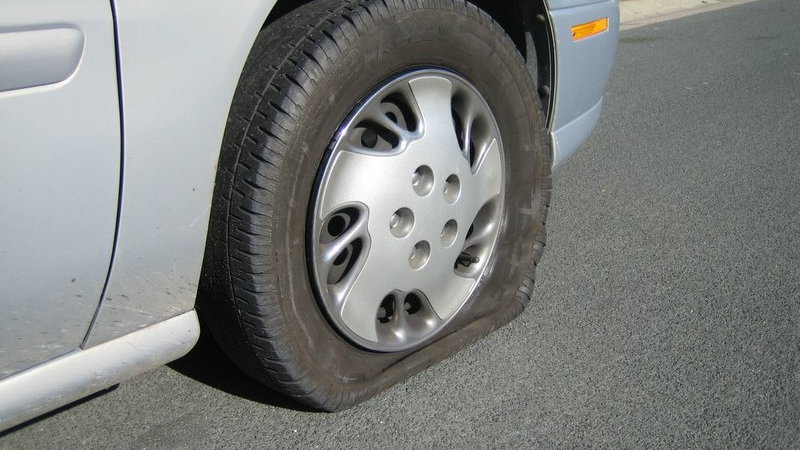 When your wheel hits a curb, the force will cause the wheel to face in a different direction than the other wheels. This is especially troublesome and dangerous in the front steering wheels, which are the primary victims of curb strikes.
When your wheel hits a curb, the force will cause the wheel to face in a different direction than the other wheels. This is especially troublesome and dangerous in the front steering wheels, which are the primary victims of curb strikes.
When your front wheels are out of alignment, your vehicle is more difficult to steer. In addition, because the wheels are continuously competing for dominance, your front tires face greater friction with the surface of the road. This leads to increased gas mileage as well as premature tire wear – in addition to the immediate safety concerns.
A particularly vicious strike can leave one wheel visibly out of alignment, rendering the vehicle inoperable. However, many wheel misalignments are imperceptible to the eye and require a skilled service mechanic to diagnose and repair the problem.
Steering and Suspension Damage
The steering and suspension components in your vehicle work interdependently to provide a safe and comfortable driving experience. When one or more of these parts is damaged by a curb strike, your ability to drive safely is compromised.
When one or more of these parts is damaged by a curb strike, your ability to drive safely is compromised.
For example, your vehicle’s tie rods provide a link between the wheels and the steering mechanism. The springs absorb the shock of uneven road surfaces, and the struts prevent the vehicle from bouncing uncontrollably from the actions of the springs through hydraulic pressure that stabilizes the vehicle.
Tie rods are designed to accommodate the movements of the struts and springs through their ability to pivot in all directions. However, a sudden and violent curb strike can cause tie rods to become bent and ineffectual, which leads to inconsistent steering ability and excessive tire wear.
If a strut is damaged, it will no longer be able to mitigate the bouncing of the corresponding spring. This can also lead to subsequent tie rod damage as well as loss of control through excessive bouncing when driving on a rough patch of road.
Any of these issues could pose an immediate or future problem for you and your vehicle. That’s why it’s important to watch your speed, especially on curves in the road and during inclement weather.
That’s why it’s important to watch your speed, especially on curves in the road and during inclement weather.
It just as important to have a trusted and experienced repair facility to inspect your vehicle after a particularly nasty curb strike. If you’re in the San Rafael, CA, area, then take your vehicle to Neuhaus Service, Inc. after your battle with a local curb. We’d be happy to take a look.
A self-tapping screw or a sharp stone lying on the road can cause a lot of trouble for the driver. After reading this article, you will have a ready-made sequence of actions to take if you have a flat tire.
If for an experienced driver a wheel puncture is just a small nuisance that takes half an hour to set up a spare tire, then a novice, faced with a similar problem for the first time, will definitely be confused. Indeed, many questions will immediately arise in his head: “what to do now?”, “How to replace the wheel on your own?” and “can I get to the car service on a flat tire?”. Therefore, we will deal with the situation in order.
Therefore, we will deal with the situation in order.
Tires with and without tubes
There can be many reasons for a flat tire. If you have a chamber wheel (that is, a chamber is inserted into the tire, which was actually inflated), then it is rather unfortunate to run into a sharp object, and the tire will go down in a matter of minutes. Imagine if this happens at speed... That's why most automakers fit their cars with safer tubeless tires. Drivers drive such cars for months with a screw in the wheel and do not notice it.
The fact is that inside tubeless tires there is no separate chamber, and the pressure is kept due to the tight fit of the tire beads to the disk. In the event of a puncture, a tubeless wheel will bleed air much more slowly. Of course, if the self-tapping screw (or something else) remains at the puncture site. A special viscous solution is applied inside the tubeless tire, which is glued to the self-tapping screw, “closing the hole”, and does not allow air to leave the wheel.
Four causes of air poisoning in the wheel
There are many reasons for letting air out of a tubeless tire. This is not only a puncture or breakage of the spool (this is a valve located in the nipple that regulates the passage of air during inflation), as is the case with a chambered wheel, but also a side cut or peeling of the tire from the disk.
1. Tread puncture
Perhaps the most common cause of a flat tire is a puncture. Nails, pieces of wire or other metal objects, unfortunately, are far from rare "guests" on the roads. What can we say about the sharp pebbles found here and there on a country road ...
In most cases, metal objects get stuck in the tread. And this is good! Firstly, the self-tapping screw is not difficult to notice, thereby establishing the puncture site. Definitely harder to find an empty hole. Secondly, the object remaining in the tire inhibits the release of air from the wheel.
Many will be surprised, but it is better not to pull a protruding foreign object out of the tread.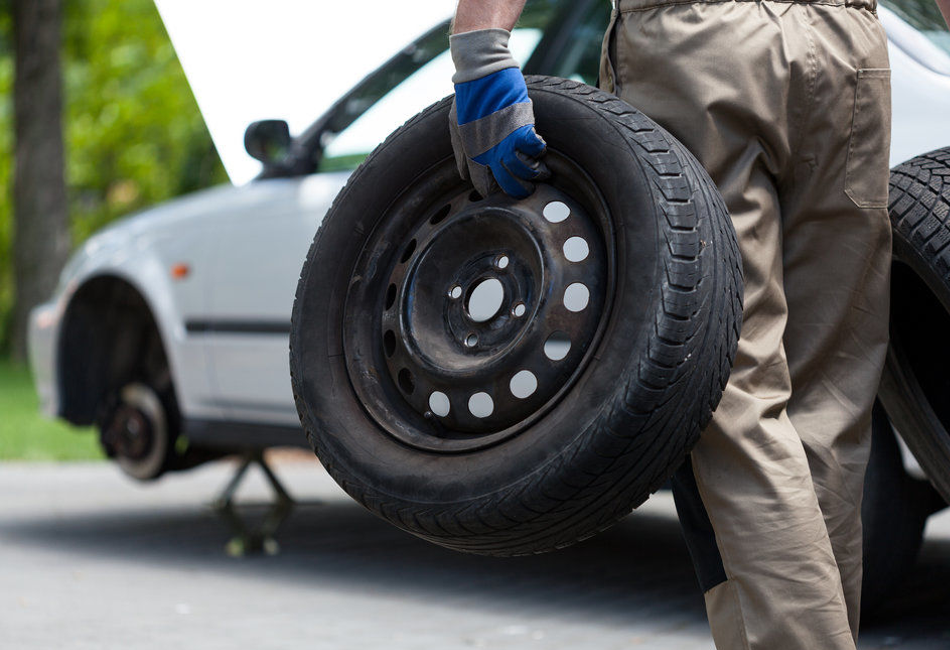 If the puncture is small, this will allow you to get to a car service without changing the wheel to a spare one, but only periodically pumping it up with a pump, and there you can start fixing it. In addition, with the self-tapping screw not removed in the tire fitting, it will be much easier to find the cause of the air leak, pull out the stuck object and seal the hole.
If the puncture is small, this will allow you to get to a car service without changing the wheel to a spare one, but only periodically pumping it up with a pump, and there you can start fixing it. In addition, with the self-tapping screw not removed in the tire fitting, it will be much easier to find the cause of the air leak, pull out the stuck object and seal the hole.
2. Side cut tire
Tire cuts are much less common than punctures. The sidewall of the wheel is usually damaged: it is much thinner than the running part of the tread.
The cut is usually caused by diving into a sharp-edged pothole or an unfortunate collision with a curb. So park carefully. Sometimes, however, cuts do not depend on the driver - after all, one of the "well-wishers" could try. In any case, the cut must be examined. In case of minor damage to the wheel, you can still try to restore it (in a car service). If the cut does not reach the cord (rings of soft metal threads that run along the entire inner diameter of the tire), then the wheel usually does not flatten.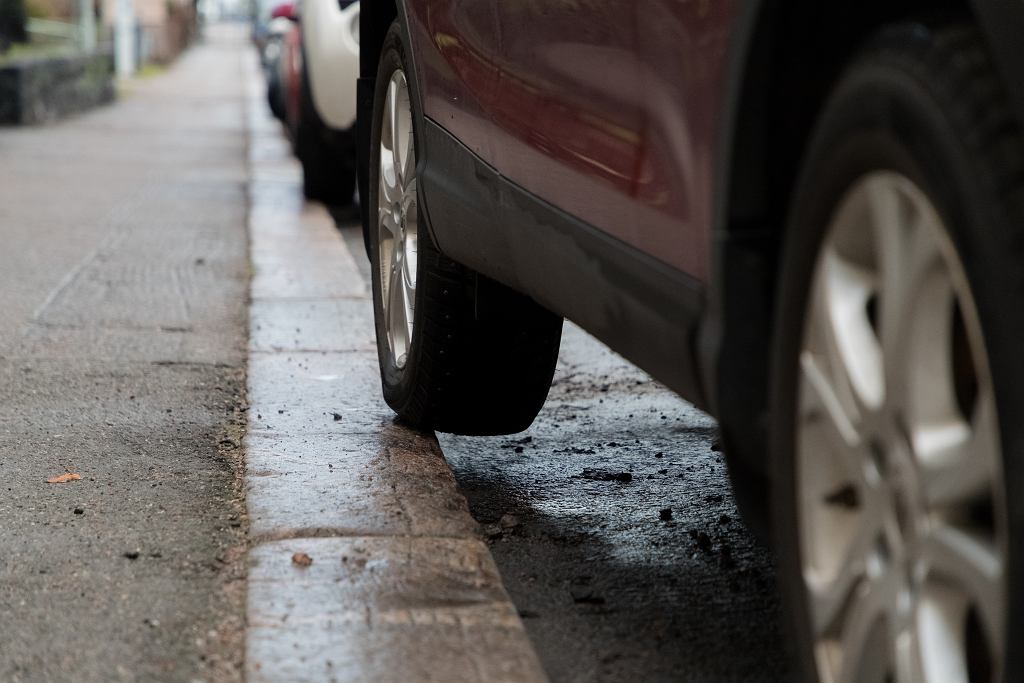 With a more severe cut, the tire will have to be changed.
With a more severe cut, the tire will have to be changed.
In some car services, the masters can offer you the restoration of a wheel with a serious cut. Even if the tire does not deflate, under the influence of pressure it can burst at any time. And, most likely, this will happen while driving, and the consequences can be very serious. So it's not worth the risk.
3. Loss of tight contact of the tire with the disc itself
Driving on "high-quality" Russian roads often leads to disk deformation. Enough to fall into the hole. Inexperienced drivers may also encounter this problem due to a strong impact on the curb while parking or turning (what is called: "not fit"). The disk is deformed, as a result of which the tire bead seal becomes leaky, and air begins to escape into the gap formed.
Violation of the geometry of the rims entails many problems. Firstly, a dent in the disc spoils the tire, on which a “hernia” often occurs. In this case, rubber can no longer be saved.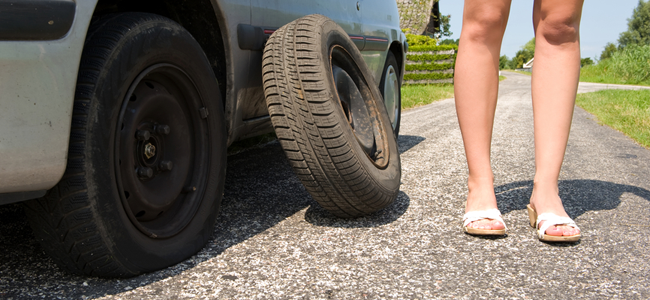 Secondly, disk deformation often leads to increased vibration of the car body or “beating” of the steering wheel. As a result, the suspension will also suffer.
Secondly, disk deformation often leads to increased vibration of the car body or “beating” of the steering wheel. As a result, the suspension will also suffer.
However, this problem can be solved by straightening (aligning) the disk in any tire fitting.
4. Broken nipple or spool
And finally, another reason for a flat tire is a malfunction of the nipple (inlet-outlet device) or spool (valve inside the nipple). It is very simple to diagnose the “etching” of air through the nipple: just lick your finger and smear the outlet with saliva. If the liquid starts to bubble, then the problem is in the nipple.
To stop air leakage, you will either have to glue the place where the nipple valve fits on the disk and then you can’t do without tire fitting (the wheel must be disassembled), or replace the faulty spool and re-inject air into the wheel.
What should I do if the wheel "breaks" while driving?
If during the trip you heard loud "squishing" sounds, then, most likely, you have a flat tire.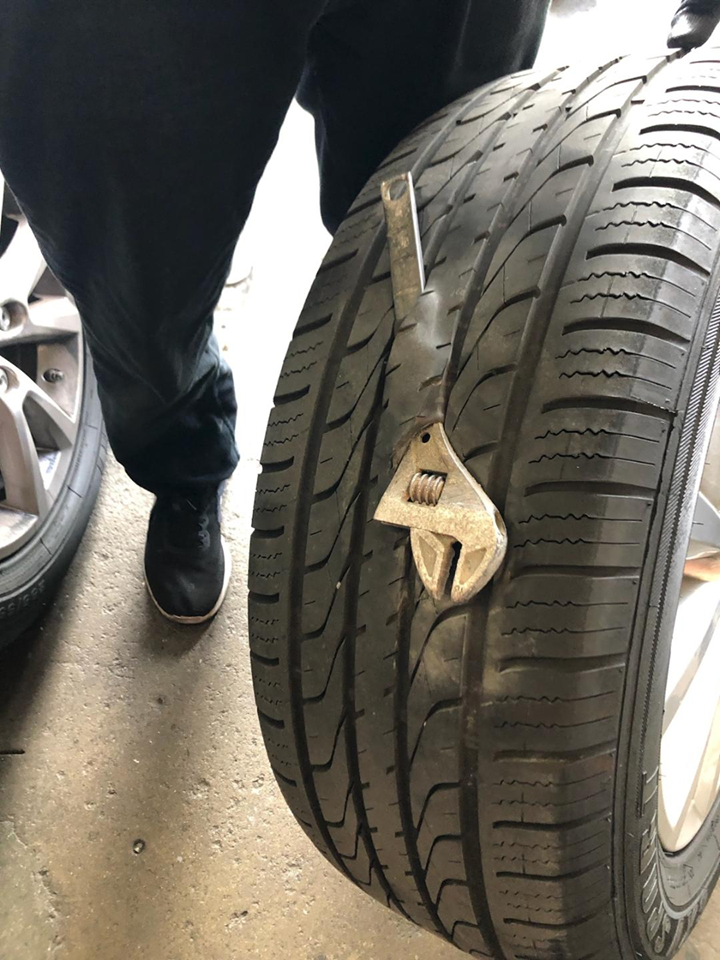 When "breaking through" the front tire, the car can also "lead" to the side. Do not rush to press the brake pedal, despite your instincts. Otherwise, the drift is guaranteed. Try to keep the car on a straight path even if it is drifting to the side. You need to let the car stop smoothly and on its own, ideally on the side of the road. Turn on your hazard warning lights and put up a warning triangle to protect yourself from being kicked in the butt. And then deal with troubleshooting.
When "breaking through" the front tire, the car can also "lead" to the side. Do not rush to press the brake pedal, despite your instincts. Otherwise, the drift is guaranteed. Try to keep the car on a straight path even if it is drifting to the side. You need to let the car stop smoothly and on its own, ideally on the side of the road. Turn on your hazard warning lights and put up a warning triangle to protect yourself from being kicked in the butt. And then deal with troubleshooting.
How to identify the location of the damage?
First, inspect the wheel and listen. You can often hear air escaping when punctured. This will help you find the hole.
However, it also happens that the tire outwardly looks intact, but does not hold air. In this case, you need to pump up the wheel one to one and a half atmospheres, apply soap suds on it and see where air bubbles appear. If this does not help, you will have to remove and immerse the entire tire in water.
If these methods do not help, then there is another one. True, you will have to disassemble the wheel and run a rag along the inner surface of the tire. The fabric will certainly catch on to a foreign object.
Driver's lifesaver: spare tire and repair kit
Be sure to bring a pump and repair kit with you. After all, no one is immune from hitting a nail. Well, a spare wheel, a jack and a balloon wrench, of course.
Installing a spare is pretty easy. For this, the girl does not have to strain at all - you can stop a passing car. In Russia, people are sympathetic, they should not leave in trouble!
1. First, unscrew the mounting bolts from the wheel.
2. Install wheel chocks (large stones will do instead), shift into gear, and apply the handbrake to keep the machine from moving during repairs.
3. Raise the desired side of the car on the jack. At the same time, make sure that the car does not warp in the process of lifting.
4. We change the “punctured” wheel to a spare one.
5. We tighten the bolts on the wheel until they stop, but do not tighten yet.
6. We lower the car.
7. And now we completely tighten the bolts.
At the same time, moving on the dokatka, you should not accelerate much. And of course, in the near future it must be replaced with a full-size wheel.
If the puncture is small, then you can get by with a repair kit by closing the puncture. However, it must be purchased in advance and carried in the trunk of a car.
What if there is no spare?
Can you drive on a flat tire? Theoretically, yes, constantly pumping up the tire (if the air does not leave quickly). However, it is highly undesirable to do this, since the rubber tire quickly breaks, the disk is deformed, and the car shakes violently, which makes movement unsafe. And the wheel is unlikely to survive such a trip.
However, any problem is easier to prevent than to solve.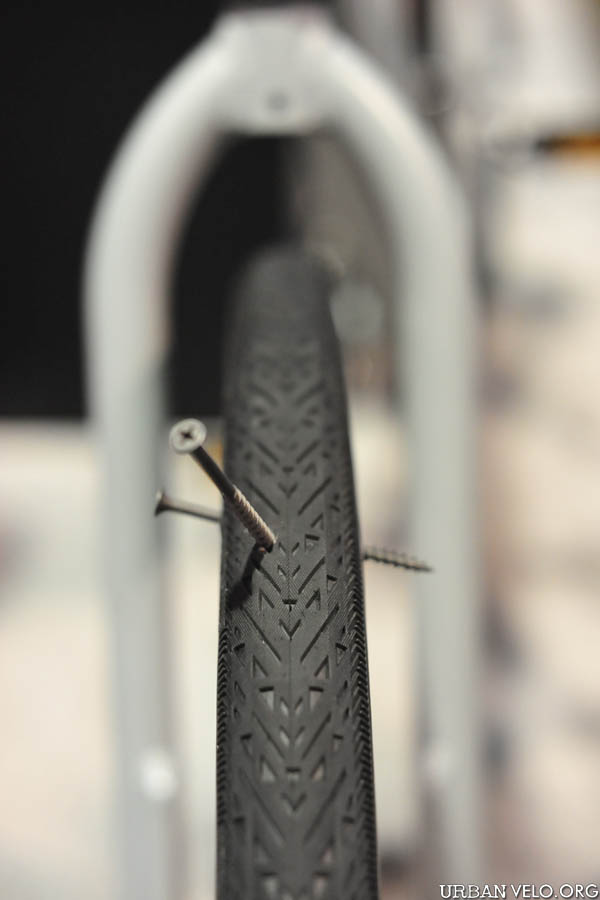 So try to avoid driving on a broken road, park carefully and be sure to carry a repair kit and spare tire with you. Also, check your tire pressure regularly.
So try to avoid driving on a broken road, park carefully and be sure to carry a repair kit and spare tire with you. Also, check your tire pressure regularly.
Photo www.tgamobility.co.uk
It is not uncommon for tire pressure to decrease gradually over several days. You inflate them to the required level, but the tires again pass air over time. In this case, you should contact the tire shop, where they will determine the cause of the pressure loss. There may be several. We will look at the problems with tubeless tires, since most modern cars are equipped with them.
Ivan Flyagin
Disk damage usually leads to its deformation. This comes from hitting the wheel at high speed on the edge of the pit or on a steep and hard bump. Due to the loose fit of the tire to the rim, a partial air leak occurs. Keep in mind that damage may be hidden on the inside of the rim, while the outside of the wheel will look brand new, without any visual flaws.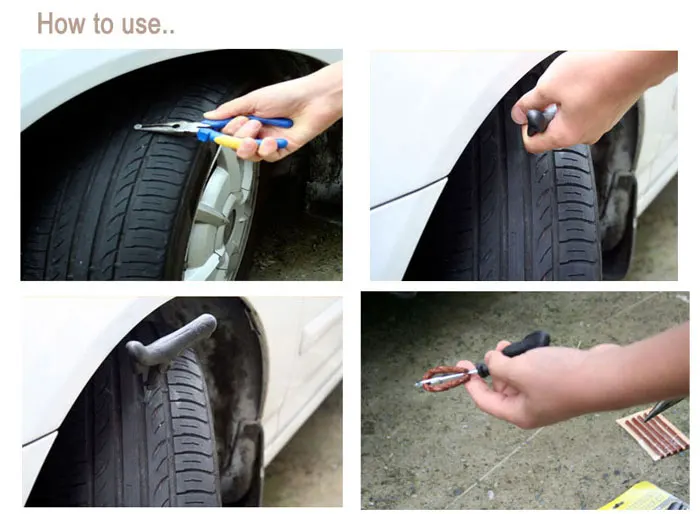
Another possible reason for the gradual loss of pressure in the tires is the depressurization of the valve (or nipple) as a result of mechanical impact, or the ingress of the smallest dust particles into it. If the mechanism is in good condition, then air can leak in the place where its valve is attached to the disk. Sometimes you can fix the problem by pumping the spool with a few sharp and short presses.
Quite often the tire “catches” a nail or other sharp and large object on the road, which safely gets stuck in the place of the puncture. In this case, it serves as a stopper, only not completely sealed, so the air will slowly but surely bleed. If a nail hits a tire with a camera, it instantly bursts, and at high speed this is fraught with an emergency.
A tire can be damaged not only on the tread side, where the thickest and most durable rubber layer is located. Its side is also vulnerable to contact with sharp objects.